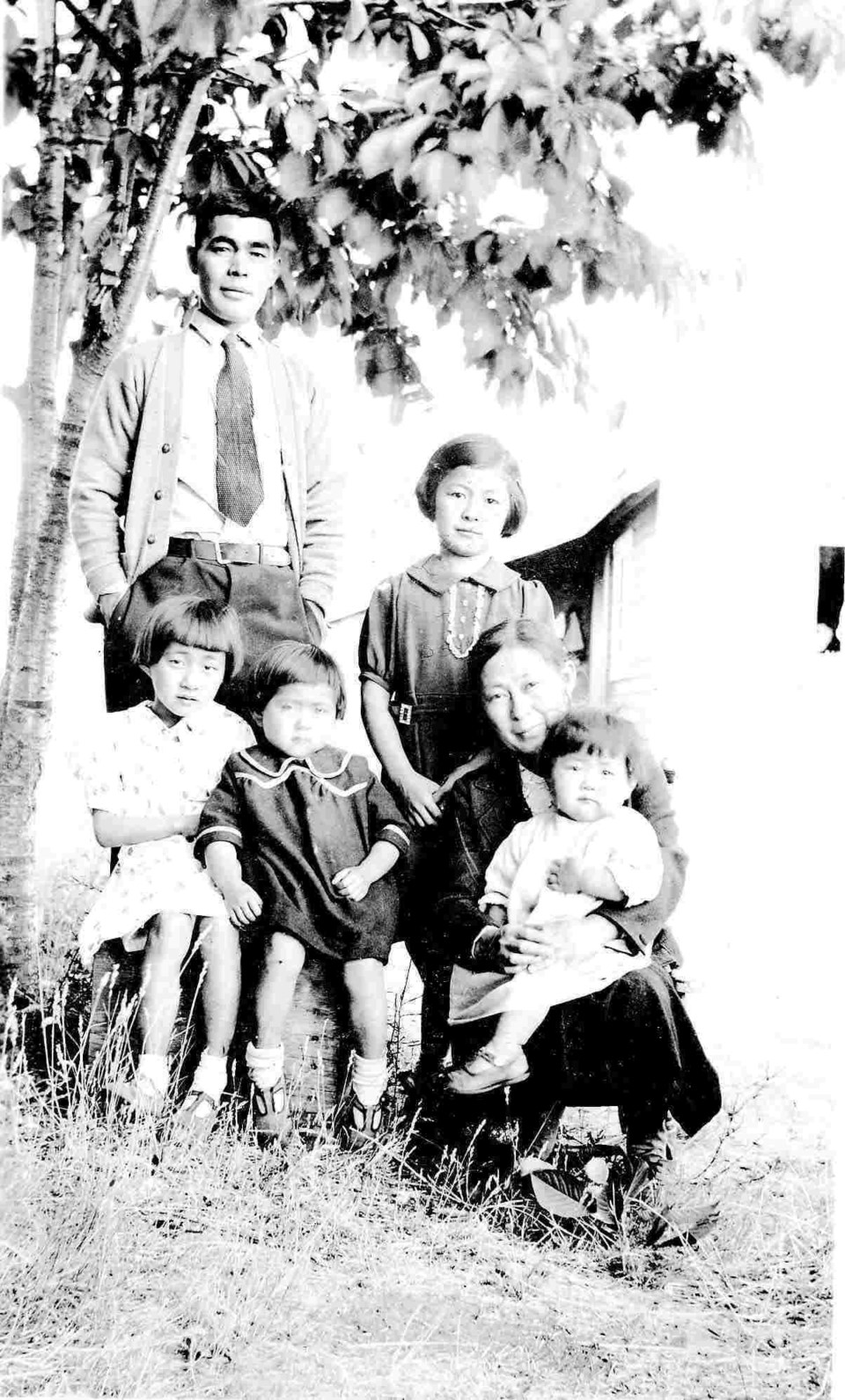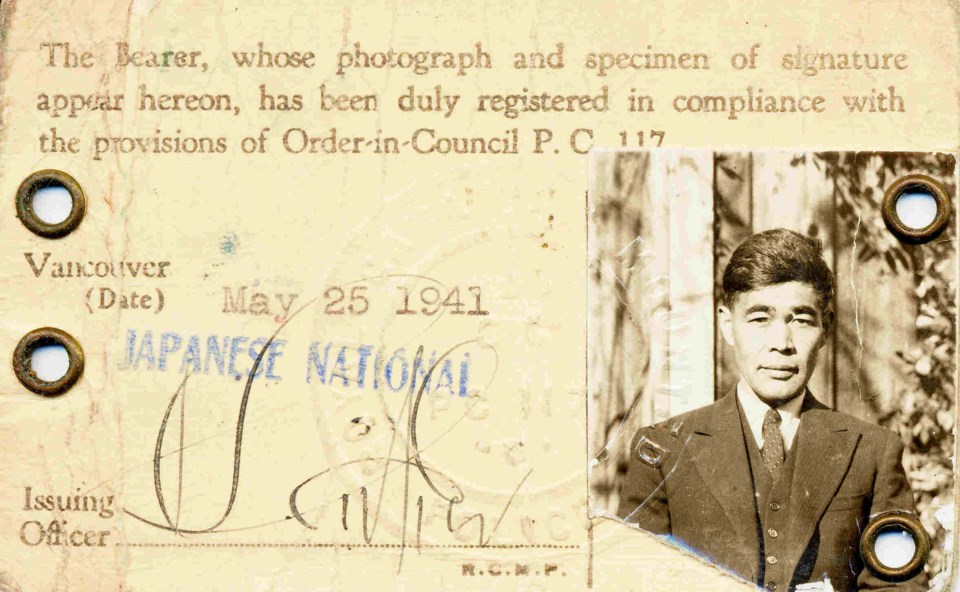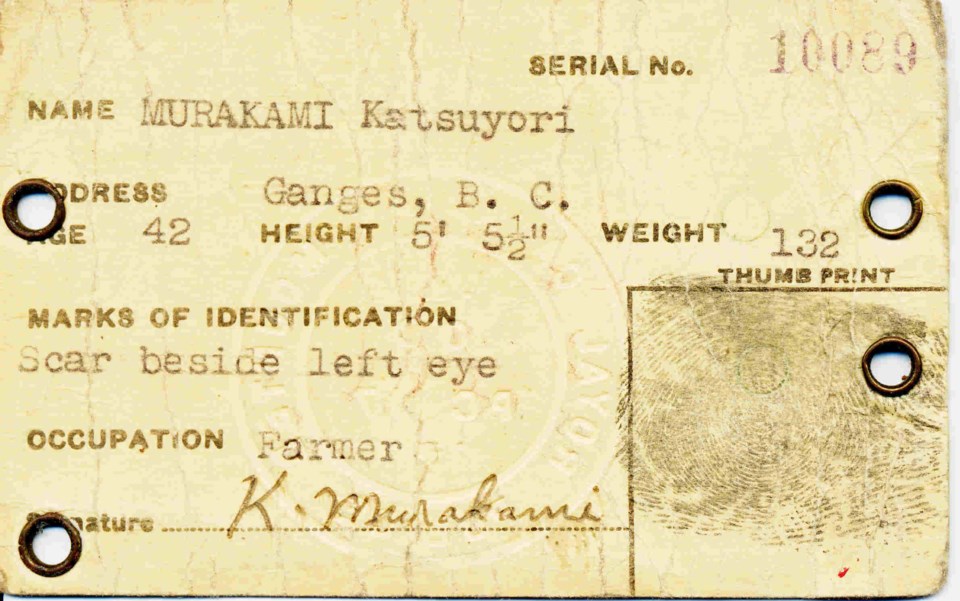On Thursday September 28, the Vancouver Historical Society hosts a lecture by Mary and Tosh Kitagawa entitled "The Japanese-Canadian Internment: 75 Years Later." The talk is at 7:30pm at the Museum of Vancouver. All are welcome and entrance is by donation.
 The Murakami family on Saltspring Island, 1938. Father Katsuyori is standing with oldest daughter Alice. Seated from left to right are, Violet, Mary, mother Kimiko and Rose on her lap. Two boys were born later, one in an internment camp in the BC Interior. Photo courtesy of Mary Kitagawa. Photo courtesy of Mary Kitagawa.
The Murakami family on Saltspring Island, 1938. Father Katsuyori is standing with oldest daughter Alice. Seated from left to right are, Violet, Mary, mother Kimiko and Rose on her lap. Two boys were born later, one in an internment camp in the BC Interior. Photo courtesy of Mary Kitagawa. Photo courtesy of Mary Kitagawa.
This year is the 75th anniversary of the beginning of the blackest chapter in Canadian human-rights history. Early in 1942, in the wake of the Japanese attack on Pearl Harbor and the declarations of war between the Allied and Axis powers, 22,000 people of Japanese ancestry, three-quarters of whom were born in Canada, were uprooted from their homes along the BC coast.
The saga of their removal and incarceration in the BC interior and on the sugar-beet farms in Alberta, the forced sale of their properties, and the restrictions placed on them all the way until 1949 is the subject of the September lecture to the Vancouver Historical Society by Mary and Tosh Kitagawa.
Mary was born on Saltspring Island; her mother was born in Steveston, while her father was a Japanese national who had been rebuffed in his repeated attempts to become a naturalized Canadian citizen. Mary's grandparents had moved to Saltspring in the 1910s to clear and farm 200 acres when their fishing license was taken away by the government; Mary's parents moved there after their marriage in 1926 and bought land across the road. Mary was seven when an RCMP officer knocked on their door and took her father away. He disappeared – for months, no word reached them. He had been forced onto a road crew in the Yellowhead Pass along with thousands of other men separated from their families.
 All British Columbians of Japanese ancestry were required to carry photo-ID as of August 12, 1941, four months before the Pearl Harbor attack that triggered the Pacific war. Katsuyori Murakami’s card marks him as a Japanese National; about three-quarters of the cards identified their bearers as “Canadian Born.” Photo courtesy of Mary Kitagawa.
All British Columbians of Japanese ancestry were required to carry photo-ID as of August 12, 1941, four months before the Pearl Harbor attack that triggered the Pacific war. Katsuyori Murakami’s card marks him as a Japanese National; about three-quarters of the cards identified their bearers as “Canadian Born.” Photo courtesy of Mary Kitagawa.

On April 21, 1942, along with almost 70 other Japanese Canadians on Saltspring, they were taken on the Princess Mary to Hastings Park barn and lived under appalling conditions there until their removal to the former copper-mining town of Greenwood near Grand Forks. To reunite the family, they agreed to move to Magrath, Alberta, working like serfs on a sugar beet farm until returning to the Kootenays and an odyssey moving from camp to camp, including a winter spent in a tent.
During this period, in 1943, they heard of the passage of Order in Council P.C. 469 and the forced sale of their property. In 1945 came a second uprooting to Magrath, then Cardston. Eventually after the restrictions were lifted they returned to Saltspring and a hostile reception from the populace. The RCMP told them directly they could expect no police protection.
Mary's personal saga will be put into the broader context of anti-Asian animus by her husband Tosh. Mary became a schoolteacher and Tosh spent his career in business. They re-engaged with their community during the Japanese-Canadian redress movement of the 1980s, which culminated in the federal apology and payment of compensation in 1988.
History is usually told by people long-separated from the actual events. This is a rare opportunity to hear it from a participant.
–Michael Kluckner
Vancouver Historical Society talks take place on the fourth Thursday of the month at 7:30pm at the Museum of Vancouver (1100 Chestnut Street). Everyone is welcome to attend and entrance is by donation. Learn more.


